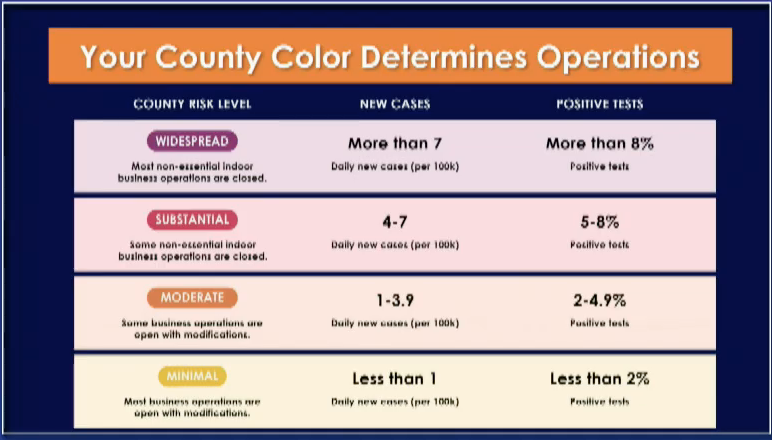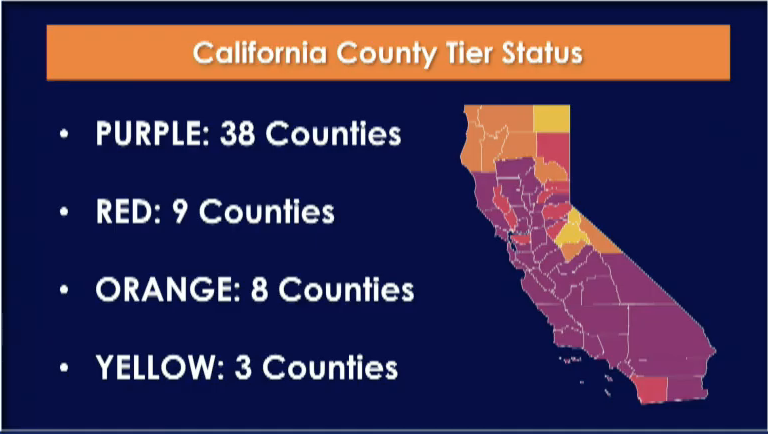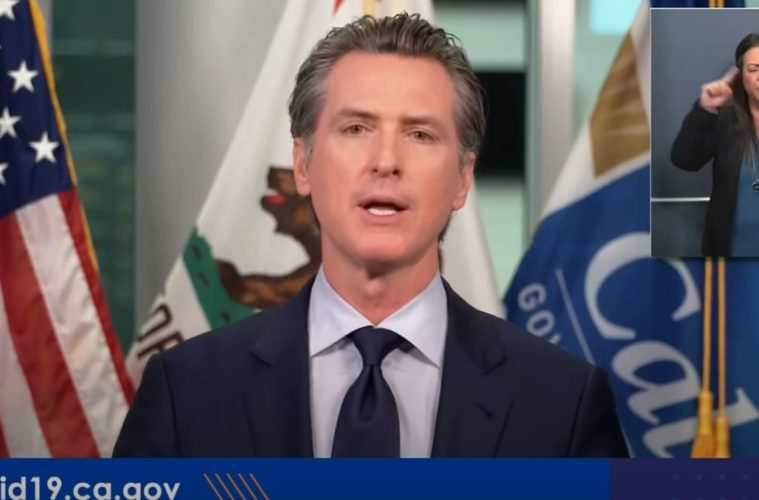California Governor Gavin Newsom announced four unified tiers for COVID-19 that will define how operations will be monitored through the state.
The new color-coded tiers for COVID-19 monitoring will replace any former county-based monitoring systems. The new system will label the amount of positive cases and positivity rates as either widespread, substantial, moderate and minimal.

“We’ve learned a lot over the last few months, on how this virus spreads,” Newsom said Friday. “COVID-19 will be with us for a long time and we need to adapt.”
In order to help the public better understand what activities are permissible in certain sectors, the state introduced, “A Blueprint For A Better Economy,” found within the COVID-19 portion of the state’s website.
The “Blueprint for A Better Economy” will take effect August 31, allowing the public to input a ZIP code and desired activity to verify if it is open.
Under the new system, barbershops and hair salons statewide will be allowed to reopen its indoor operations with certain modifications, however, L.A. County opposed those permissions.
L.A. Public Health said, “Since County orders may be more restrictive than State guidance, all current restrictions remain in place until @lapublichealth and the @LACountyBOS have an opportunity to review the suggested guidance from the State and take actions that are appropriate for our County.”
Although the State today revised slightly the list of permitted activities in Tier 1 to allow for the re-opening of both hair salons for indoor services and indoor shopping centers for permitted retailers, the Health Officer Order has not been changed to permit these re-openings.
— LA Public Health (@lapublichealth) August 28, 2020
There are currently 38 counties in the “purple tier,” including Los Angeles, which means the cases and rates are still considered “widespread.” The widespread section replaces the state’s “watchlist,” where counties were restricted from most indoor operations.
In the new purple tier, Newsom said the counties have to have “at least two weeks stability” in order to move down to a lower tier, and moving forward, the counties’ statuses will be assessed every Tuesday, starting September 8.

At one point, as many as 40 counties, including Los Angeles and Orange, were being monitored through the state’s former watchlist, being ordered to close indoor operations such as gyms, churches and personal care businesses.
While Orange County was removed from the monitoring list earlier this week, Los Angeles businesses have had to keep its indoor operations shut down.
On Wednesday Los Angeles Mayor Eric Garcetti said that in order to get off the watch list, the county would have to get fewer than 100 cases per 100,000 people, or fewer than 10,000 cases for 14 consecutive days. The new tiers for COVID-19 give more specificity, stating that counties must fall below seven new daily cases per 100,000 people in order to move out of the “purple” tier.
As of August 26, the county was averaging 191 cases per 100,000 people, meaning that a reduction would still need to take place in order to be removed from the highest tier.
That county reopening goal differs from the previous benchmark, which was keeping the positivity rate under 8 percent for 14 consecutive days and was the leading factor in how openings and closures were determined.
“From the day this virus arrived here in Los Angeles, our No. 1 public health goal has been simple,” Garcetti said. “To keep infections low enough to make sure our hospitals have the beds, ICU beds equipment and the staffing to serve patients afflicted by COVID-19 and other serious health concerns.”
Garcetti added that while there have been times of significant increases in infections, it has never threatened the hospital capacity in Los Angeles.
As of Wednesday, 1,168 people were actively hospitalized by the virus in L.A. County, marking the lowest number since hospitalizations started being tracked.
The positive cases had been dropping in California with the state seeing a 9 percent decrease over a 14-day span.
While the positivity rate had fallen, the state’s testing capabilities have doubled, adding 150,000 tests per day and the ability to provide test results within 48 hours of it being administered.
Advertising disclosure: We may receive compensation for some of the links in our stories. Thank you for supporting LA Weekly and our advertisers.

